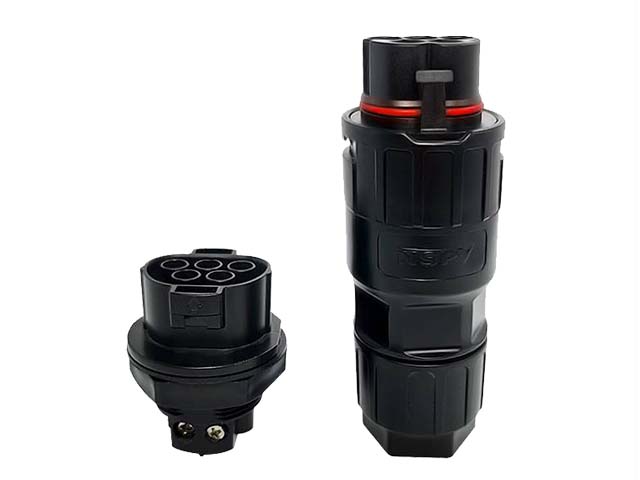M12 connectors are commonly used in industrial and automation applications to connect sensors, actuators, and other devices. They come in different types and configurations, each with its unique features and benefits. One of the essential aspects of M12 connectors is the coding, which refers to the specific keying or pin arrangement that ensures correct mating and prevents incorrect connections.
In this blog post, we’ll dive deeper into the meaning of coding on M12 connectors. We’ll discuss the different types of coding, how it is done, and its importance. By the end of this post, you’ll have a better understanding of M12 connectors and how to choose the right one for your application.
Types of Coding on M12 Connectors
M12 connectors come in different coding types, each with its specific features and benefits. Here are the most common types of coding:
A-Code
A-Code connectors have three or four pins arranged in a circular pattern with a locking thread. The coding is done through a physical keyway on the coupling nut and a groove on the mating face of the connector. A-Code connectors are commonly used for sensor applications, including proximity sensors, photoelectric sensors, and pressure sensors.
Examples of A-Code connectors include the M12 X coded connectors from Phoenix Contact and Murrelektronik.
B-Code
B-Code connectors have four or five pins arranged in a circular pattern with a locking thread. The coding is done through a physical keyway on the coupling nut and a flat mating face on the connector. B-Code connectors are commonly used for data transmission applications, including Ethernet and Fieldbus.
Examples of B-Code connectors include the M12 D-coded connectors from Phoenix Contact and Turck.
D-Code
D-Code connectors have four or five pins arranged in a circular pattern with a locking thread. The coding is done through a physical keyway on the coupling nut and a flat mating face on the connector. D-Code connectors are commonly used for power transmission applications, including motors, drives, and actuators.
Examples of D-Code connectors include the M12 L-coded connectors from Phoenix Contact and Harting.
X-Code
X-Code connectors have eight pins arranged in a circular pattern with a locking thread. The coding is done through a physical keyway on the coupling nut and a flat mating face on the connector. X-Code connectors are designed for high-speed Ethernet applications, including Profinet and EtherCAT.
Examples of X-Code connectors include the M12 X-coded connectors from Phoenix Contact and Harting.
How Coding is Done on M12 Connectors
Coding on M12 connectors is done through physical or color coding. Let’s discuss each of these coding methods in detail:
Physical Coding
Physical coding is the most common type of coding used on M12 connectors. It involves the use of a physical keyway or groove on the coupling nut and a flat or grooved mating face on the connector. The keyway or groove ensures that only the correct connector can be mated, preventing incorrect connections.
Physical coding is easy to implement and does not require any special tools or equipment. However, it may not be suitable for applications where the connectors need to be frequently plugged and unplugged due to the wear and tear on the keyway and groove.
Color Coding
Color coding is another type of coding used on M12 connectors. It involves the use of different colors for the housing and coupling nut, allowing easy identification of different connector types. For example, A-Code connectors may have a black housing and coupling nut, while B-Code connectors may have a blue housing and coupling nut.
Color coding is useful for applications where the connectors need to be frequently changed or replaced, as it is easy to identify the correct connector type at a glance. However, it may not be suitable for applications where the connectors need to be used in low-light or no-light conditions.
Importance of Coding on M12 Connectors
The coding on M12 connectors is essential for several reasons:
Prevents Incorrect Connections
M12 connectors are used in many different applications, and it’s crucial to ensure that the right connector is used for each application. The coding on M12 connectors ensures that only the correct connector can be mated, preventing incorrect connections that can cause equipment damage or safety hazards.
Improves System Reliability
The use of the correct connector ensures that the system operates reliably and efficiently. Incorrect connections can cause intermittent faults or even complete system failure, leading to costly downtime and lost productivity.
Enables Easy Identification
The different types of coding on M12 connectors allow easy identification of connector types, making it easy to select the right connector for a specific application. This is particularly useful in applications where different types of sensors or actuators are used, and each requires a specific connector type.
FAQs:
Q: What does the coding mean on M12 connectors?
A: The coding on M12 connectors refers to the keying or pin arrangement used to ensure proper mating and connection between devices. It helps to prevent incorrect connections and ensures that the electrical signals are correctly transmitted.
Q: How is the coding on M12 connectors represented?
A: The coding on M12 connectors is typically indicated by letters, numbers, or symbols on the connector housing. These markings can vary depending on the specific coding standard or manufacturer. Common coding types include A-coded, B-coded, D-coded, and X-coded.
Q: Can M12 connectors with different codings be mated with each other?
A: No, M12 connectors with different codings are not compatible and should not be mated with each other. The coding is specifically designed to ensure that connectors with the same coding type can be properly connected while preventing incompatible connections.
Q: How do I identify the coding type of an M12 connector?
A: The coding type of an M12 connector is usually indicated by markings or symbols on the connector housing. These markings can vary depending on the manufacturer. It is important to refer to the documentation or specifications provided by the connector manufacturer to identify the coding type accurately.
Q: Are there other coding types for M12 connectors apart from A, B, D, and X?
A: Yes, apart from the commonly used A, B, D, and X-coded M12 connectors, there are additional coding types available, although they might be less common. Examples include L-coded connectors used for DC power applications and S-coded connectors used for AC power applications. These coding types serve specific requirements and may not be as widely used as the A, B, D, and X-coded connectors.
Conclusion
The coding on M12 connectors is essential for ensuring correct mating, preventing incorrect connections, and improving system reliability. The different types of coding, including physical and color coding, allow easy identification of connector types, making it easy to select the right connector for a specific application.
When choosing M12 connectors for your application, it’s essential to consider the coding type and the specific features and benefits of each type. Whether you need connectors for sensor applications, data transmission, power transmission, or high-speed Ethernet, there’s an M12 connector that’s perfect for your needs.



